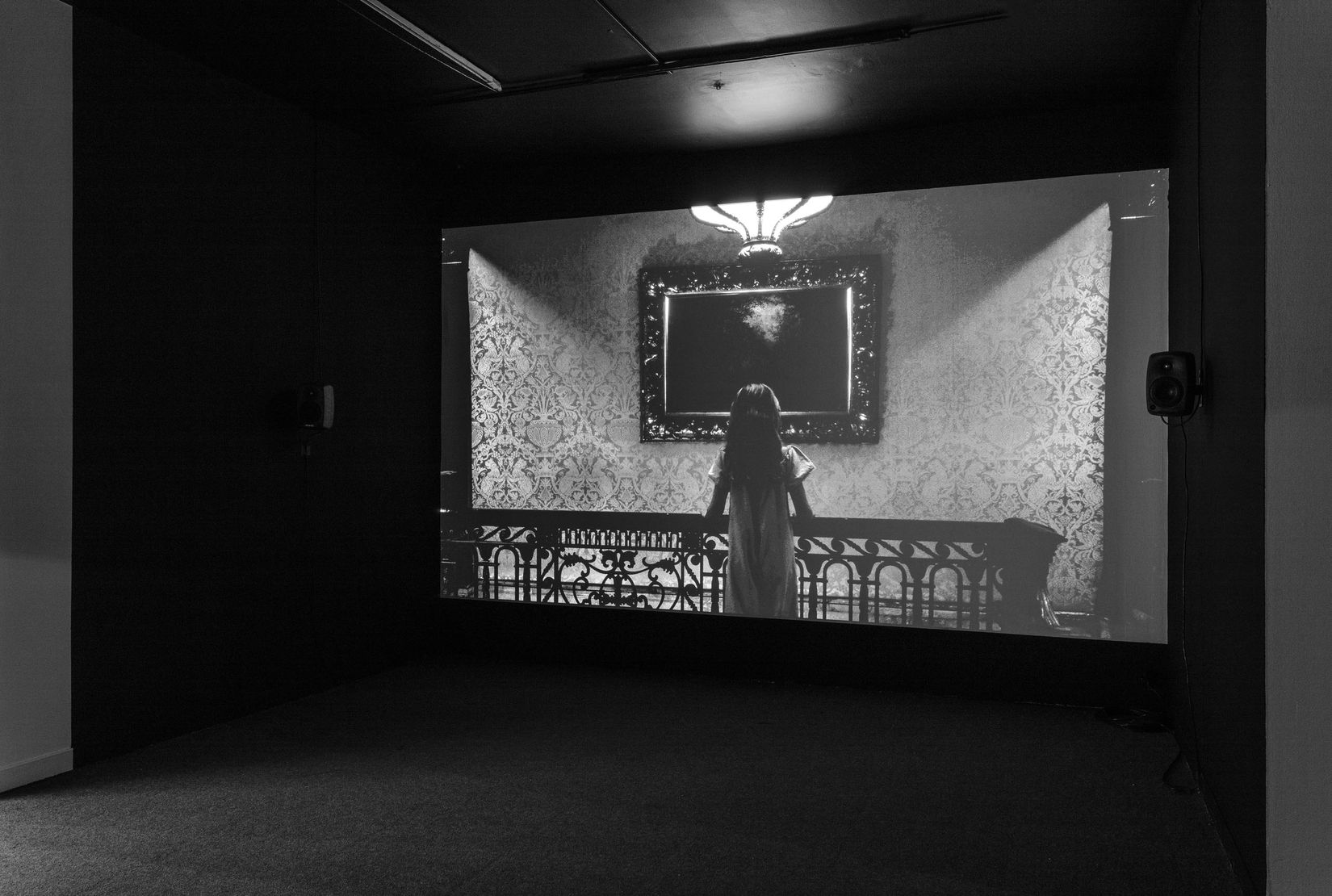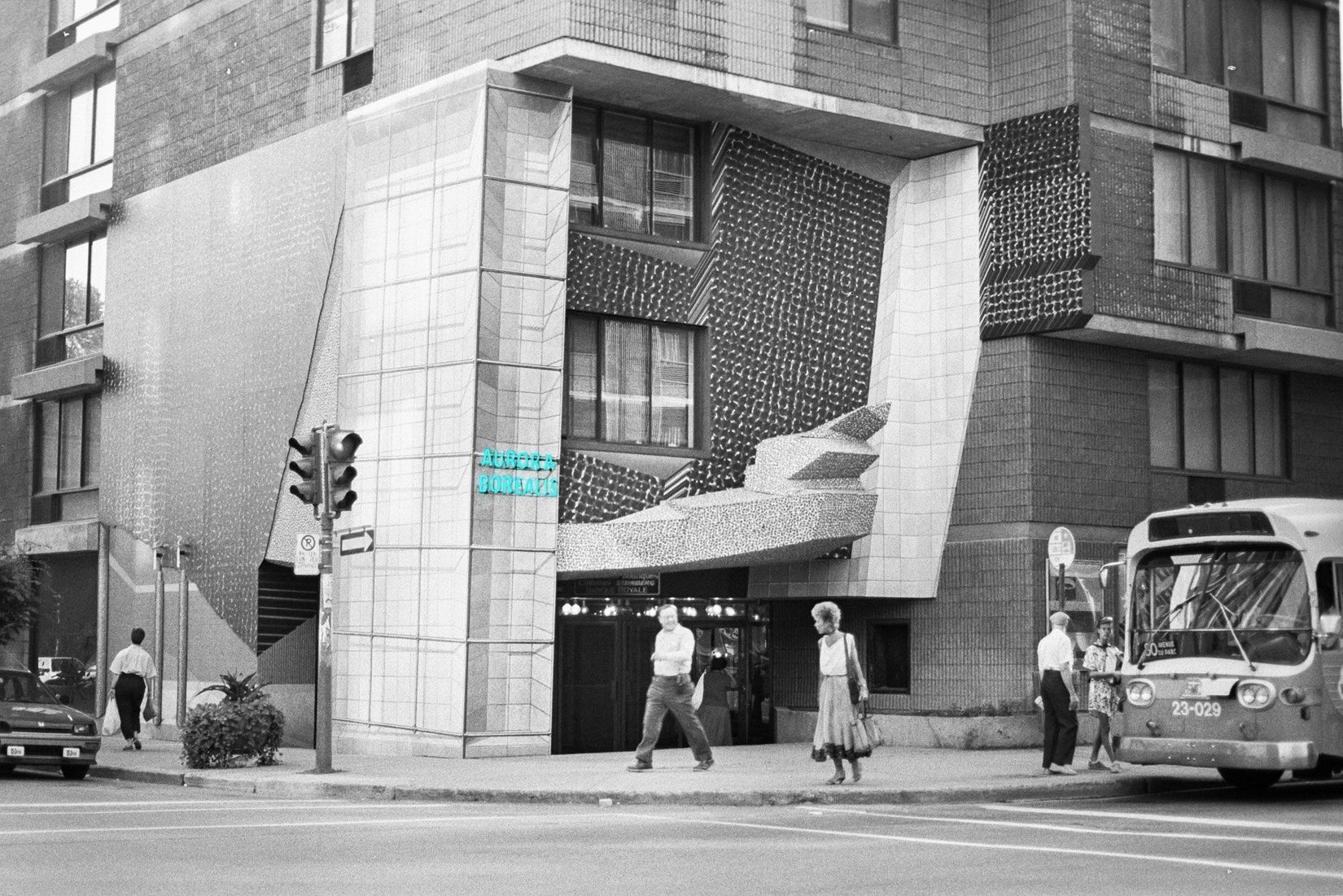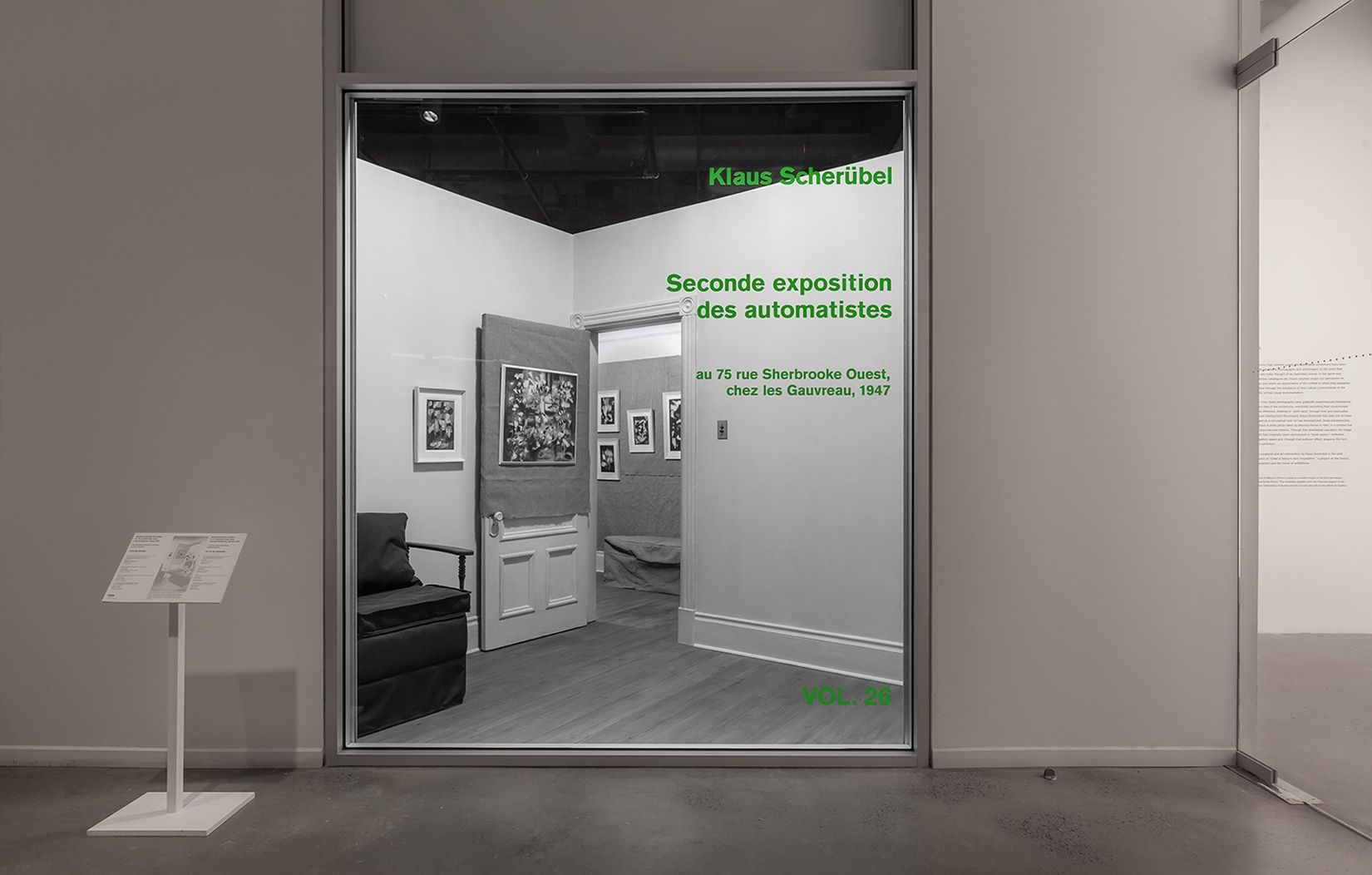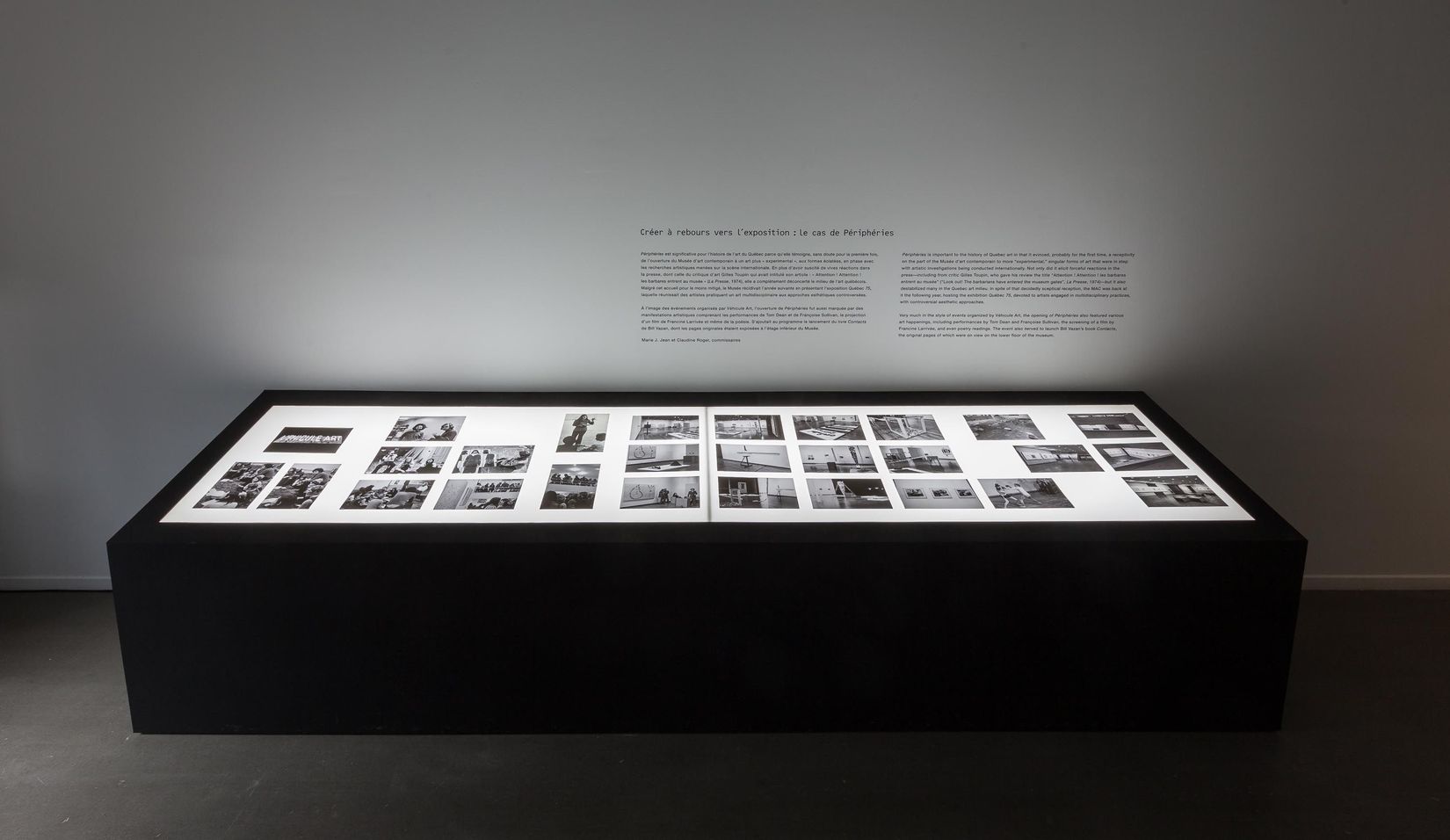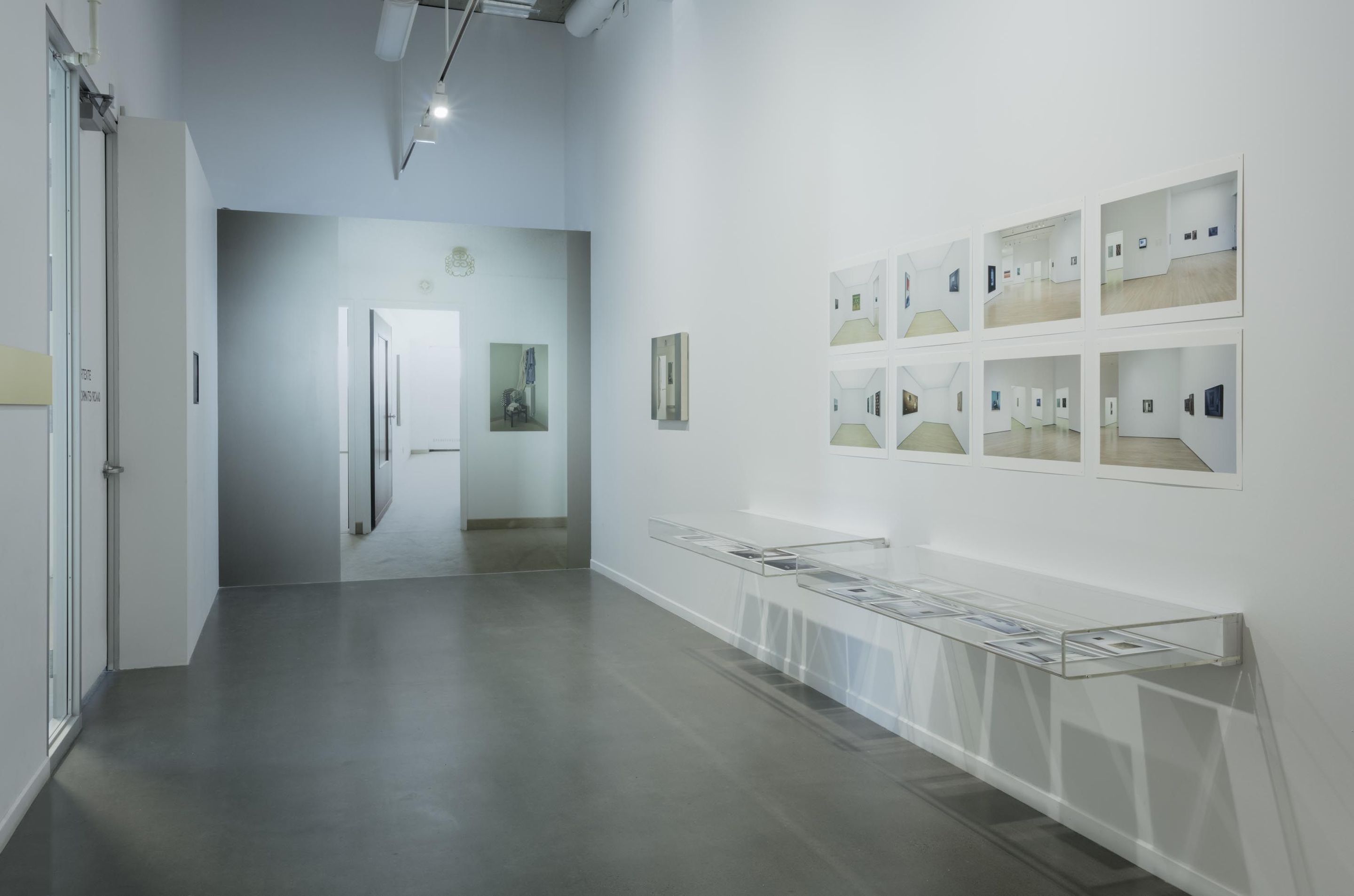
“Créer à rebours vers l’exposition”: The case of Chambres avec vues
2018.02.14 - 03.31
MARIE J. JEAN
Continuing its research begun in 2016 into the practice, history and future of exhibitions and their documentation, VOX presents its third documentary exhibition, dedicated to Chambres avec vues, created in 1999 by Pierre Dorion. The curator’s intent is to map, working backward from the present day, the multiple re-actualizations of this emblematic exhibition with a view to understanding how accounts of it took shape.

In the course of its brief history, Chambres avec vues has had two distinct presentation modes: first, a site-specific installation by Pierre Dorion in a vacant unit of the Les Dauphins sur le Parc apartment building in 19991, and second, its reconstitution for an overview exhibition of Dorion’s work curated by Mark Lanctôt at the Musée d’art contemporain de Montréal in 2012. The first iteration was thus an in situ project in a non-institutional space, while the second saw it re-activated in a museum context. On the two occasions, both the artist and the curator made different uses of exhibition views: where Dorion used them as artistic material, for Lanctôt they served as a reference for a staging device. How, then, was this documentary material used by one and the other to establish historical and narrative relations between the two exhibitions?
The 1999 exhibition was a key juncture in Dorion’s practice, marking a return to site-specific installation, a feature of his mid-1980s work—examples include his participation in Aurora Borealis (1985) and interventions in apartments (Clark St., 1983, and Appart’ art actuel, 1984). At the same time, it involved painterly exploration characterized by realism, in which a paring-down of detail and fragmentation of spaces created a schematic effect bordering on abstraction.
The artist showed eleven pictures, all painted after photographs he had taken between 1991 and 1998 during stays in Paris and New York, showing views of various stripped-down interior spaces with distinctive elements—a bed facing the wall with a monochrome picture above, a chair in a corner near a baseboard heater, a telephone on a wall, light fixtures hanging from the ceiling—except for one depicting an exterior view. The paintings, hung in the four empty rooms of the small apartment rented for the occasion, constituted an installation and provoked reflection about the ambiguous space provided by the apartment complex.2 Using a building of this style was not without significance, Lanctôt wrote, since it had been built in 1972 and thus referred to a dated modernist ideal.3 The apartment even featured cubic rooms that, in their minimalism, immediately called to mind the White Cube aesthetic typical of modernist exhibition spaces, despite allowing the pictures to be viewed in a domestic setting. The pictorial, residential and exhibitional spaces, in implicitly referencing that modernist aesthetic, produced an unusual mise en abyme effect. That effect was further accentuated by one painting (Chambre à coucher, 1999), in more of a documentary style (practically black & white), which depicted the empty room that contained it, and was cleverly placed next to mirrored doors that further doubled its presence. (This was the sole painting in the exhibition that had been executed based on a previous “reconnaissance” visit to the space by the artist.)
When the exhibition was reconstituted in 2012,4 the artist and curator crafted a similar mise en abyme experience for viewers: this second iteration was introduced by a painting (Vestibule (Chambres avec vues), 2000) that again showed one of the rooms of the apartment, this based time on an exhibition view made by Richard-Max Tremblay in 1999. A perceptible time lag resulted, since in addition to the apartment, it depicted two of the original paintings as well. While the exhibition was here used by Dorion for purposes of painterly exploration, it also became an indispensable curatorial tool for Lanctôt.
The re-activation thirteen years later of Chambres avec vues took the unusual form of a monumental maquette with the cubic volumes of the apartment reproduced almost to scale.5 Hewing to the modernist model still prevailing in museums, they were also painted white. That staging device allowed the works to be hung in the same positions as they had been originally, all while skilfully plunging the viewer into an abstraction of a space.6 While the success of the reconstitution depended on the idea of reproducing the intimate spaces of the apartment, it hinged just as much on the reactivation of the viewer’s route, dictated by the configuration. The importance ascribed to the original path through the display space was enhanced by the inclusion of a documentary video by Monique Moumblow that took viewers on a tour of the Les Dauphins building as it looked in 1999.7
While it is true that documentation of an exhibition cannot replace the in situ experience of it, it is also true that its architectural reconstitution, via abstract schematizing, can only be suggestive of that spatial experience. Clearly, though, one and the other are equally effective documentary strategies affording privileged access to the original staging. This documentary exhibition, for its part, provides the opportunity to examine a mise en abyme skilfully devised by an artist.
VOX wishes to thank for their precious contribution Pierre Dorion, Mark Lanctôt, Monique Moumblow and Richard-Max Tremblay.

